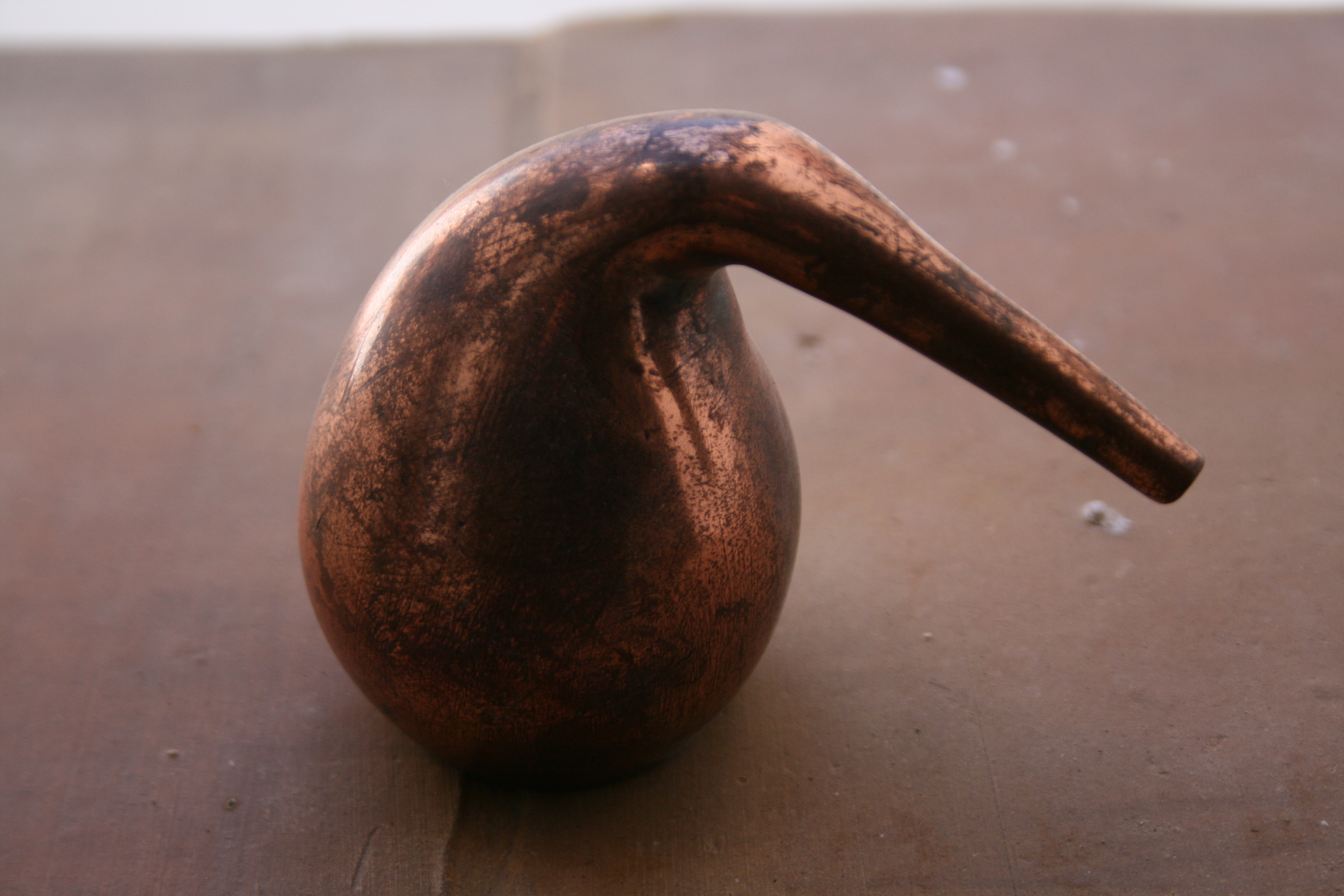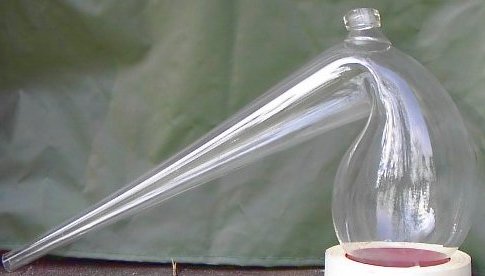Retorts on:
[Wikipedia]
[Google]
[Amazon]

 In a
In a

 In a
In a chemistry
Chemistry is the scientific study of the properties and behavior of matter. It is a physical science within the natural sciences that studies the chemical elements that make up matter and chemical compound, compounds made of atoms, molecules a ...
laboratory, a retort is a device used for distillation
Distillation, also classical distillation, is the process of separating the component substances of a liquid mixture of two or more chemically discrete substances; the separation process is realized by way of the selective boiling of the mixt ...
or dry distillation
Dry distillation is the heating of solid materials to produce gaseous products (which may condense into liquids or solids). The method may involve pyrolysis or thermolysis, or it may not (for instance, a simple mixture of ice and glass could be ...
of substances. It consists of a spherical vessel with a long downward-pointing neck. The liquid
Liquid is a state of matter with a definite volume but no fixed shape. Liquids adapt to the shape of their container and are nearly incompressible, maintaining their volume even under pressure. The density of a liquid is usually close to th ...
to be distilled is placed in the vessel and heated. The neck acts as a condenser, allowing the vapors to condense and flow along the neck to a collection vessel placed underneath.
In the chemical industry
The chemical industry comprises the companies and other organizations that develop and produce industrial, specialty and other chemicals. Central to the modern world economy, the chemical industry converts raw materials ( oil, natural gas, air, ...
, a retort is an airtight vessel in which substances are heated for a chemical reaction producing gaseous products to be collected in a collection vessel or for further processing. Such industrial-scale retorts are used in shale-oil extraction, in the production of charcoal
Charcoal is a lightweight black carbon residue produced by strongly heating wood (or other animal and plant materials) in minimal oxygen to remove all water and volatile constituents. In the traditional version of this pyrolysis process, ca ...
and in the recovery of mercury in gold-mining processes or from hazardous waste
Hazardous waste is waste that must be handled properly to avoid damaging human health or the environment. Waste can be hazardous because it is Toxicity, toxic, Chemical reaction, reacts violently with other chemicals, or is Corrosion, corrosive, ...
. A process of heating oil shale
Oil shale is an organic-rich Granularity, fine-grained sedimentary rock containing kerogen (a solid mixture of Organic compound, organic chemical compounds) from which liquid hydrocarbons can be produced. In addition to kerogen, general compos ...
to produce shale oil, oil shale gas, and spent shale is commonly called retorting. Airtight vessels to apply pressure as well as heat are called autoclaves.
In the food industry
The food industry is a complex, global network of diverse businesses that supplies most of the food consumed by the world's population. The food industry today has become highly diversified, with manufacturing ranging from small, traditional, ...
, pressure cookers are often referred to as "retorts", meaning "canning
Canning is a method of food preservation in which food is processed and sealed in an airtight container (jars like Mason jars, and steel and tin cans). Canning provides a shelf life that typically ranges from one to five years, although under ...
retorts" for sterilization under high temperature (116–130 °C).
History
Retorts were widely used by alchemists, and images of retorts appear in many drawings and sketches of their laboratories. Before the advent of modern condensers, retorts were used by many prominent chemists, such asAntoine Lavoisier
Antoine-Laurent de Lavoisier ( ; ; 26 August 17438 May 1794), When reduced without charcoal, it gave off an air which supported respiration and combustion in an enhanced way. He concluded that this was just a pure form of common air and that i ...
and Jöns Berzelius.
An early method for producing phosphorus
Phosphorus is a chemical element; it has Chemical symbol, symbol P and atomic number 15. All elemental forms of phosphorus are highly Reactivity (chemistry), reactive and are therefore never found in nature. They can nevertheless be prepared ar ...
starts by roasting bones, and uses clay retorts encased in a very hot brick furnace to distill out the highly toxic product.
The term ''retort'' comes by way of Middle French
Middle French () is a historical division of the French language that covers the period from the mid-14th to the early 17th centuries. It is a period of transition during which:
* the French language became clearly distinguished from the other co ...
, but ultimately from Latin
Latin ( or ) is a classical language belonging to the Italic languages, Italic branch of the Indo-European languages. Latin was originally spoken by the Latins (Italic tribe), Latins in Latium (now known as Lazio), the lower Tiber area aroun ...
''retortus'', twisted back, for the shape of the neck.
Role in analytical chemistry
Inlaboratory
A laboratory (; ; colloquially lab) is a facility that provides controlled conditions in which scientific or technological research, experiments, and measurement may be performed. Laboratories are found in a variety of settings such as schools ...
use, due to advances in technology, especially the invention of the Liebig condenser
The Liebig condenser (, ) or straight condenser is a piece of laboratory equipment, specifically a condenser (laboratory), condenser consisting of a straight glass tube surrounded by a water jacket.
In typical laboratory operation, such as distil ...
, retorts were largely considered to have been rendered obsolete as early as the beginning of the 20th century. However, some laboratory techniques
A laboratory (; ; colloquially lab) is a facility that provides controlled conditions in which scientific or technological research, experiments, and measurement may be performed. Laboratories are found in a variety of settings such as schools, u ...
that involve simple distillation and do not require sophisticated apparatus may use a retort as a substitute for more complex distillation equipment.
In biochar-pyrolysis industry
A retort is a reactor that has the ability to pyrolyze pile-wood, or wood logs over long and up to in diameter.Emrich, W. 'Handbook of Charcoal Making, the Traditional and Industrial Methods'. D. Reidel Pub. Co., Hingham, MA, 1985, p 296See also
* Alembic * Retort pouch *Retort stand
In chemistry, a retort stand, also called a clamp stand,Laboratory-Equipment.com (2020):Large Clamp Stand, for Q700. Online catalog item 5323-07. Accessed on 202-02-18. a ring stand, or a support stand,Fischer Scientific (2020):American Education ...
References
External links
* {{Laboratory equipment Alchemical tools Laboratory glassware